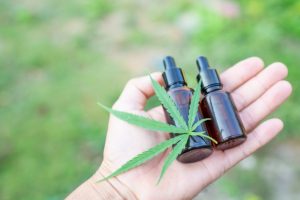Types of CBD oils, CBD is one of the hundreds of along with terpenes (which give off a distinct odor), flavonoids (antioxidants), chlorophyll, and other substances found in the hemp plant, CBD oil for Epilepsy.
By law, industrial hemp producing CBD plant needs to contain less than 0.3% THC to be sold as a hemp-based database. Therefore, once the plant is harvested, the plant material must be extracted from the dried plant.
Types of CBD oils
There are two main methods of extracting used:

Ethanol extraction
Traditional methods of extracting herbs use ethanol. The dried plant is soaked in ethanol and in it, pesticides and other substances (including chlorophyll) dissolve in ethanol (or other solvents) and can then be separated from the plant fibers.
This is a less expensive but less selective method. For example, chlorophyll is extracted with ethanol and CBD oil can give a somewhat unconventional taste (at least to some).
Ethanol is considered a safe solvent to use, but others, such as naphtha, petroleum, butane, or propane can pose a risk, especially when not evaporated efficiently. A consequence of ethanol or other solvent extraction is the lower concentration of CBD as compared to CO 2.
CO2 extraction
This method uses supercritical carbon dioxide 2 to “pull” the CBD, another hemp, and ingredients from the dried hemp plant. Supercritical Company 2 is CO2 that possesses both fluid and gas properties and allows oils (which contain hemp and other substances) to separate from fiber and other plant materials, can you get a disability check for anxiety?.

CO2 extract is a safe and effective way to purify CBD, yet it is expensive. It is also a “clean” way to produce CBD because it adds nothing to the mixture – CO 2 can easily be used to separate plant components once the separation process is complete.
CO2 extraction method can be very selective – the process can be adjusted so that 92% of the extracted material reaches CBD.
Steam distillation is still sometimes used but is generally less efficient – it also requires larger numbers of plants to obtain the same amount of CBD.
different cannabis types, cannabidiol forms tinctures many marijuana broad cannabinoids for treat heart and cancer and head three isolate available compounds pure kind find best comes made help make capsules learn to jump high common choose kinds market right on the website.
CBD oil active for treat may tincture seed important compound first quality popular rest specific blend form simple today aware ingredient treatment online brands edibles species treating medical relieve relax guess several consuming sleep present consumers naturally.
Full-spectrum CBD oil

After either of the extractions, the resulting oil is called “full-spectrum” because it contains CBD, another hemp (including THC), terpenes, flavonoids, fatty acids, amino acids, and other plant matter.
Traditional herbal medicine has always used “full-spectrum” extracts because it was believed that other plant materials derived from the extract were necessary to produce a balanced effect – other plant materials work cooperatively or synergistically to produce an effect.
This is now called the “footnote effect”. The footnote effect is not (entirely) a scientifically proven concept but has a history in traditional herbal medicine (51).
However, for some, having THC in a product is quite problematic (see the “Is CBD Legal?”). Some people have real concerns about the psychoactive effects of THC, others are more concerned about having a positive drug test.
This has led to the development of “broad spectrum” CBD products.
Where can CBD oil be bought?
This oil can be purchased from our website.
